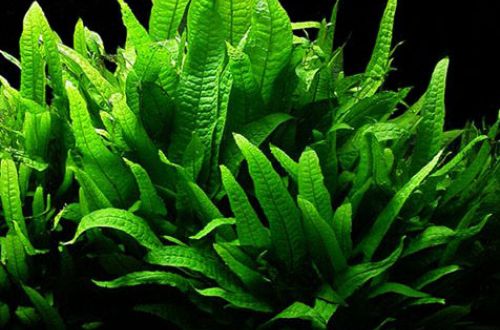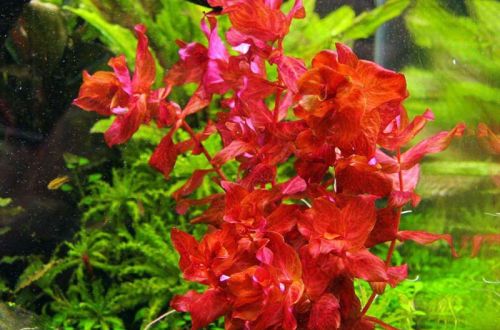
thai fern
Thailand fern, scientific name Microsorum pteropus. In Europe and America, another name is more common – Java fern (Javafarn). It is found throughout tropical and subtropical Southeast Asia. It has adapted to grow both on stones and snags in the turbulent flow of mountain streams and on the slopes of waterfalls, and on sandbanks along the banks of rivers and streams, having fixed itself on any surface.

Such endurance and unpretentiousness to the external environment, coupled with a beautiful appearance, predetermined the high popularity of the Thai fern in amateur and professional aquariums.
Since its first appearance as an aquarium plant in the 1960s, many artificially bred varieties have been bred, distinguished primarily by leaf shape, and several new subspecies have been discovered. The best known are the Angustifolia Fern, Vindelova Fern and Trident Fern.
The classic Thai fern has wide lanceolate dark green leaves reaching a height of 15–30 cm. The edge of the leaf is slightly wavy. Ferns contain a special substance that is not to the taste of many inhabitants of aquariums, so it can be used with herbivorous fish.
Simple in content. Able to adapt to different conditions. It is not picky about the level of illumination, the hydrochemical composition of water and can withstand low temperatures up to 4°C. It is recommended to fix with a fishing line, clamps or special glue on snags, stones and other design elements with a rough surface. When immersed in the ground, the roots will rot. The maximum that can be done is to lightly press the pebble to the surface of the substrate so that it does not float.





